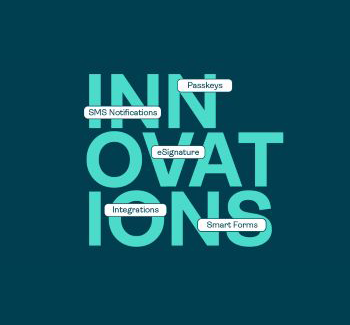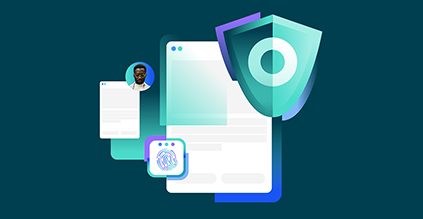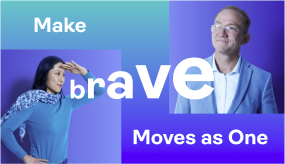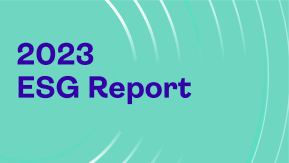Digital account opening: Two banks share best practices

Recently, a financial industry survey on the state of digital account opening found that streamlining digital account opening and acquiring new customers were among the top priorities for 80% of banking institutions.
To discuss this further, we invited TD Bank and the Business Development Bank of Canada (BDC) to explain how financial institutions can succeed in providing a superior customer experience while securing the digital account opening process end-to-end.
How digital customer experience has paid off for BDC
To demonstrate how banking organizations can benefit from digitizing banking processes such as account opening, Jorge Oliveira, Director of IT Solutions Delivery at the Business Development Bank of Canada (BDC) shared the bank’s experience. BDC has been using a mobile lending app to better serve entrepreneurs and small businesses as they open accounts for loans and finance.
BDC has always sought to find the right balance between secure technology and an engaging customer experience. In 2016, they launched Xpress Loans, a mobile app designed to improve their account managers’ efficiency by enabling digital applications. Powered by eSignatures, BDC’s mobile app allows account managers to complete and process new applications immediately. Not only did their clients love the fast and error-free user experience, it also reduced the likelihood that applicants might explore competing banks while waiting for paperwork to be signed.
In just 9 months, BDC reported outstanding results, including:
- Closing rate increased from 9.3% to 25%
- Average time to close a loan was shortened to just 2 days
- 98% of applications are now signed electronically, saving >26,000 hours of manual work
For more details, read the case study on BDC.
Tips on building the business case
During the webinar, presenters answered three key questions:
1. Do you have advice on how to build a business case for digital account opening?
One of the most important elements in building a business case is socializing it. It’s important to look at it from different angles:
- Develop a strong partnership with the business owner
- Understand the impact to existing channels
- Know who your target audience is
- Be clear about timing, cost, and roadmap – when and what can you deliver
Our presenters advised that champions of change need to develop a strong partnership with the business partner or owner.
“Make sure to bring them on the journey to gain their insights and know-how. Don't forget to acknowledge your business owner’s background. You need to speak their language; they may not understand the terminology of digital. So keep things at their level and don't overcomplicate.”
“I would also suggest working with them to establish short, medium, and long-term goals; transaction volumes; and assumptions (retention). Build in accurate projections. Make sure you articulate your hypothesis and get their buy-in. If you have a strong partner on the business side and they believe in your projections, that will make getting executive buy-in much easier.”
2. What are the best practices for assembling the right team, resources, and executive sponsor?
Bring in legal, privacy, and compliance stakeholders early. This is because in many digital transformation projects, you will be redesigning an existing process, which often involves regulatory requirements.
Pay particular attention to the following questions:
- Are there regulations around what you are trying to do (and what you can say) in digital?
- How are you changing the current new account opening process? Be clear with your legal partners on the deltas (e.g., how will changes in the digital channels differ from the processes in the branch?)
- What authentication rules are in place? What are the documents that need to be signed? What do you need to ensure end-to-end fulfillment?
- What is the privacy impact?
3. What are some best practices on designing a digital process and ensuring quick adoption?
- Get an MVP out: Know that your digital account opening process won’t be perfect at the outset. Customize as time goes on and be willing to adjust your approach and requirements. Be agile in your thinking.
- Analytics are critical from Day 1: Business owners will request this data right away. Think ahead of time about what data you will need, and when you’ll be able to begin collecting data. At a minimum, set expectations for when you will have data that ties back to your business case and articulate the key KPIs involved.
- Solve a customer need: If most of your traffic is coming from a realtor website, which means they are likely still shopping for their home, you may not want to deliver a complex digital experience when a simplified quote would suffice. Understand where customers are coming from and how they are entering your funnel. That will provide new insights on how to continuously improve.
It’s time to put digital account opening into motion
As financial institutions transform and improve their digital account opening processes, digital teams should keep the customer experience top of mind. Best practices for digital initiatives can help pave the way for successful implementations such as what the BDC experienced.
Another key consideration is finding the right technology vendors to partner with. OneSpan’s solution combines digital identity verification, eSignature, and digital audit trails to allow new and existing customers to open accounts in a secure and frictionless way – on any device, including their mobile device.
OneSpan supports several ID verification methods, so specific workflows can be designed for any online account opening scenario. Some processes only require Knowledge-Based Authentication (KBA), while others may demand ID document verification or facial comparison. This is often determined by the level of assurance required, which associates stronger authentication requirements to higher risk processes. Banks can also minimize abandonment rates by adding real-time failover methods in case technical issues arise during the initial ID check. With access to many identification check methods, financial institutions can have better worldwide coverage for compliance with local regulations.
Once an applicant’s identity is validated, financial institutions can immediately complete the account opening process by capturing eSignatures. The transaction’s relevant information is then recorded in an audit trail for regulatory compliance purposes.
Learn more about digital account opening technology by visiting our Digital Identity Verification and Digital Account Opening web pages.










